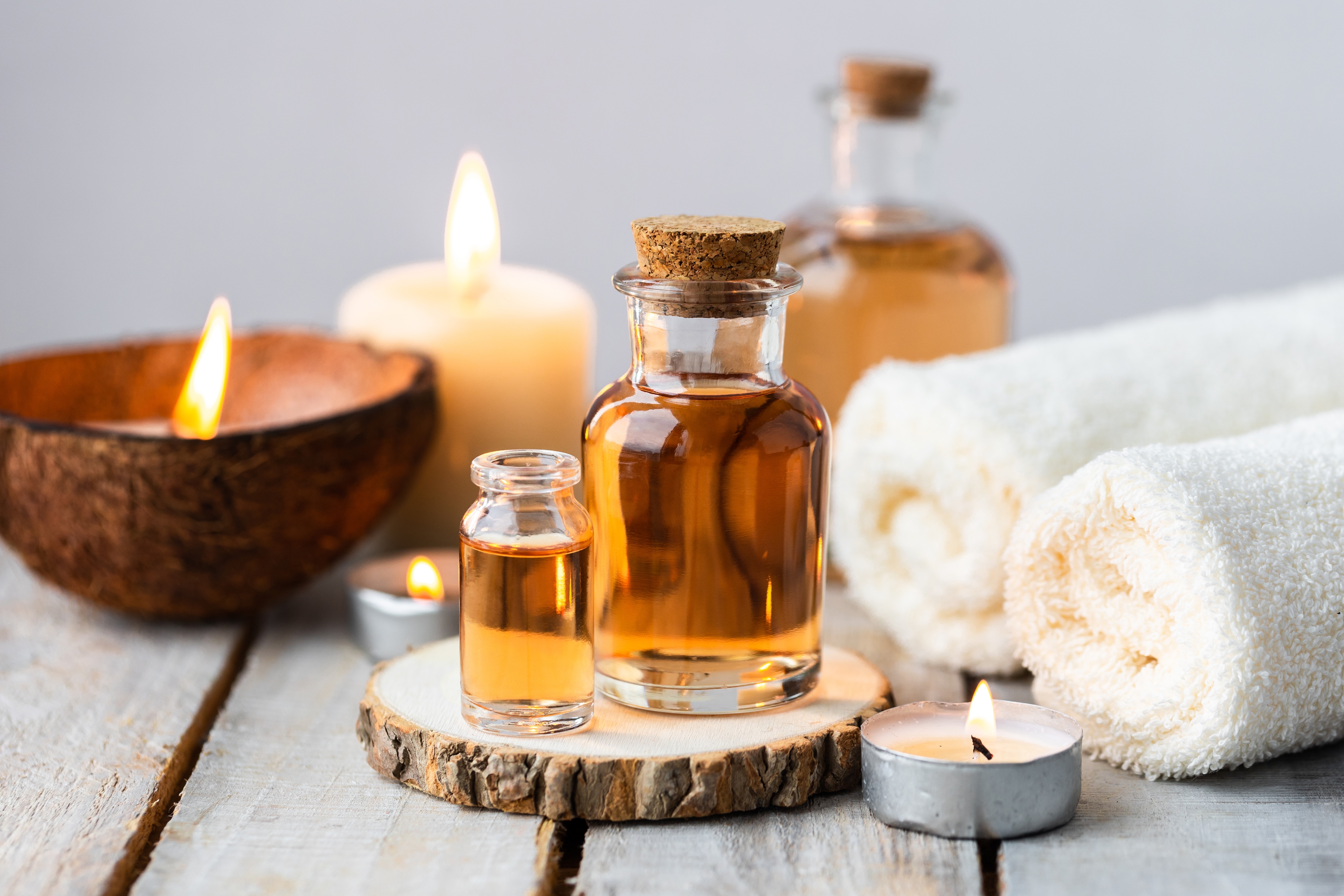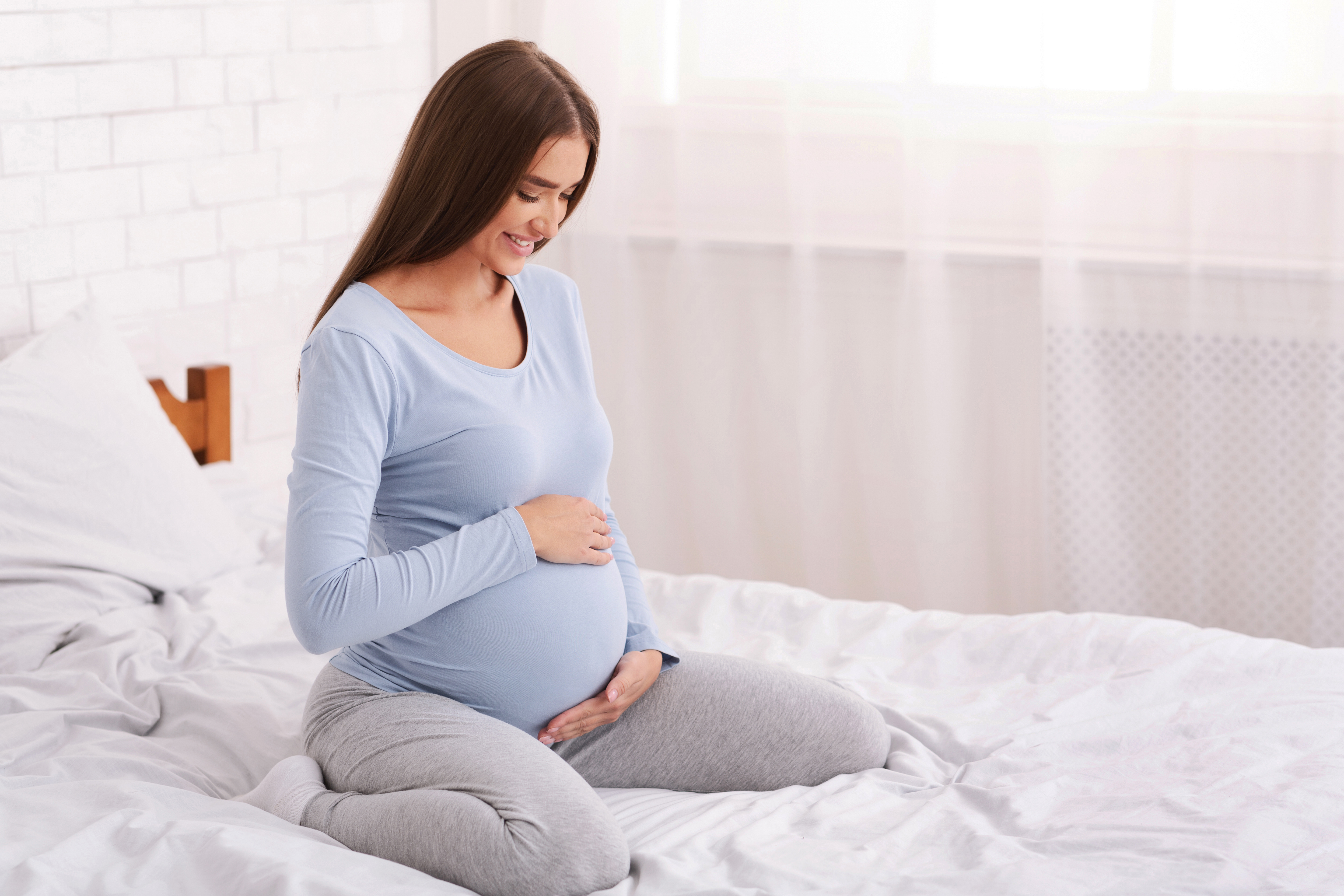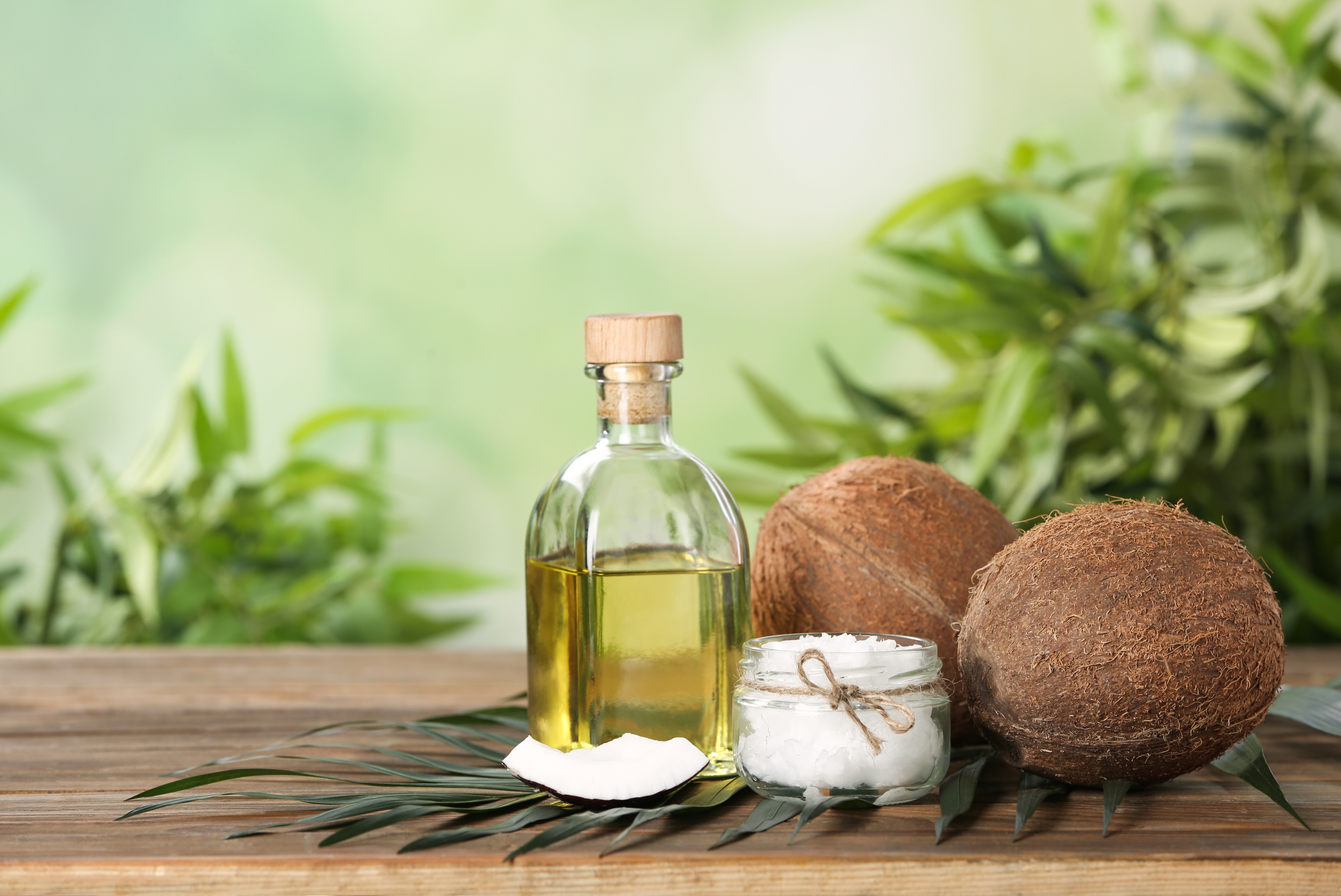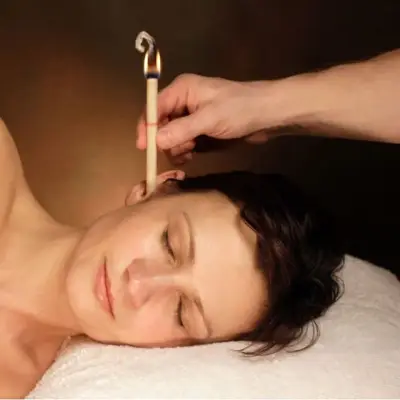Pregnancy is a remarkable journey filled with unique challenges and preparations, one of which includes getting ready for labour. A key practice that can help in this preparation is a perineal massage.
This gentle technique, often recommended during the later stages of pregnancy, is a proactive step towards a smoother childbirth experience. Let's delve into understanding what a perineal massage is, its benefits, and how you can effectively incorporate it into your pregnancy journey.
Jump to:
- What is a Perineal Massage?
- The Benefits of a Perineal Massage
- When to Start a Perineal Massage
- How to Perform a Perineal Massage in 12 Simple Steps
- Safety Precautions and Contraindications
- Perineum Stretching Techniques
- Coconut Oil and Other Natural Oils for Perineal Massage
- FAQs
- Study Hypnobirthing and Birth Doula Diplomas for £29 Each
What is a Perineal Massage?
A perineal massage involves gentle stretching and massaging of the perineum, the area between the vagina and the anus. This practice, often recommended during the later stages of pregnancy, can help prepare your body for the process of giving birth.

The Benefits of a Perineal Massage
Why consider a perineal massage in your pregnancy journey? Here are a few compelling reasons:
- Increases Elasticity of the Perineum: Regular massage helps to gently stretch the perineal tissue, increasing its elasticity. This flexibility can be useful during childbirth.
- Reduces the Likelihood of Tears: By making the perineal tissue more supple, there's a potential reduction in the likelihood of tearing during the delivery of your baby.
- May Decrease the Need for Episiotomy: With increased elasticity, you’re less likely to need an episiotomy, a surgical incision made to enlarge the vaginal opening during childbirth.
- Familiarises You with Sensations of Stretching: Regular massage can help you get used to the sensation of stretching in the perineal area, which can help you mentally prepare for the sensations of childbirth.
- Promotes Blood Flow to the Area: The massage enhances blood circulation to the perineum, promoting tissue health and recovery.
- Can Reduce Postpartum Discomfort: Women who perform perineal massages often report reduced discomfort in the perineal area after childbirth.
- Empowers You in Your Birthing Experience: Engaging in a perineal massage can be empowering, as it is a proactive step towards preparing your body for childbirth.
- Helps with Relaxation and Stress Reduction: The practice can be relaxing and may help reduce stress and anxiety about childbirth.
- Aids in Faster Recovery Post-Delivery: With fewer complications like tears or episiotomies, recovery after birth can often be quicker and less painful.
- Enhances Awareness and Control Over Your Body: Engaging in a perineal massage increases your awareness of your pelvic region, giving you a greater sense of control over your body.
Recommended for you!
Best SellersWhen to Start a Perineal Massage
So, when should you start doing your perineal massage? It's generally advised to begin around the 34th week of pregnancy. Starting early gives your body time to adapt and become more supple. However, if you're already past this point, it's not too late! Even starting at 37 weeks can still provide benefits.
How to Perform a Perineal Massage in 12 Simple Steps

As you approach the later stages of your pregnancy, considering a perineal massage as part of your preparation for childbirth can be a useful step. Let's walk through a 12-step guide on how to perform a perineal massage, ensuring you can do so safely and effectively.
- Prepare Your Space: Choose a comfortable, private area where you won't be disturbed. This might be your bedroom or bathroom. Ensure the space is warm and relaxing.
- Gather Your Supplies: You'll need a safe lubricant (such as coconut oil, almond oil, or a water-based lubricant), clean towels, and, optionally, a mirror for guidance. Having everything within reach is important for comfort and ease.
- Personal Hygiene: Wash your hands thoroughly before starting the massage. This helps prevent introducing any bacteria to the sensitive perineal area.
- Find a Comfortable Position: You can perform the massage lying down, squatting, or standing with one leg raised. Use pillows for support if lying down. If using a mirror, position it so you can see the perineal area without straining.
- Apply Lubricant: Liberally apply the lubricant to your fingers and the perineum. This reduces friction and makes the massage more comfortable.
- Start the Massage: Insert your thumb or fingers (up to the first knuckle) into the vagina. Press downwards and to the sides gently but firmly, stretching the skin towards the anus. You can also use a U-shaped motion.
- Maintain Gentle Pressure: Hold the pressure for about two minutes until you feel a slight tingling sensation. This indicates the tissues are stretching.
- Increase the Stretch (Optional): If comfortable, gradually increase the stretch over time. Remember, the goal is gentle stretching without pain.
- Duration and Frequency: Spend about five minutes on this massage, repeating it two to three times a week. Some women find daily massages beneficial as they get closer to their due date.
- Listen to Your Body: It's important to listen to your body's signals. If you feel any pain or discomfort, stop the massage and consult your healthcare provider.
- Clean Up: After the massage, clean the area with warm water. Avoid using harsh soaps as they can be drying.
- Relax and Reflect: After completing the massage, take some time to relax and reflect on the experience. This can also be a bonding moment with your baby.
Safety Precautions and Contraindications
While perineal massage is a safe practice for most pregnant women, there are certain precautions and contraindications to be aware of. It's important to consult with your healthcare provider before beginning perineal massage, especially if you have any of the following conditions:
- A history of preterm labour
- Vaginal infections
- Certain pregnancy-related complications
Always ensure cleanliness to reduce the risk of infection. Use a safe lubricant, like coconut oil, and stop the massage if you experience pain or discomfort.
Perineum Stretching Techniques
Perineum stretching is another useful practice for expectant mothers. It involves gently stretching the tissues around the vaginal opening to prepare for childbirth. Here are some techniques to try:
- Basic Stretch: Using your thumb and forefinger, gently pinch the skin at the lower part of the vaginal opening. Gently pull downwards and outwards, holding for a few seconds before releasing.
- U-Shaped Stretch: Place your thumbs about 1-2 inches inside the vagina and gently press downwards towards the anus, creating a U-shape. Hold this stretch for a few seconds, then relax.
- Side-to-Side Stretch: With your thumbs inside the vagina, gently stretch the tissue to each side. This helps to mimic the stretching that occurs during childbirth.
- Hold and Release: Gently stretch the tissue, hold for a comfortable count of 5-10 seconds, and then release. Repeat several times.
- Circular Motions: Using a lubricated finger, make small circular motions around the vaginal opening. This can increase blood flow and tissue flexibility.
- Breathing Techniques: While stretching, focus on deep, slow breathing. This helps to relax the pelvic muscles and can help during childbirth.
- Frequency and Duration: Aim to practice these stretches for a few minutes each day, starting around the 34th.
Coconut Oil and Other Natural Oils for Perineal Massage
Why coconut oil for perineal massage? It's natural, gentle, and hydrating. However, other oils like almond or olive oil can also be used. Make sure whatever you choose is safe and comfortable for you.

FAQs
Can My Partner Help Give a Perineal Massage?
Having your partner involved in perineal massage can be a wonderful way to connect and prepare for birth together. They can help reach areas you might find difficult and can also learn about the pressures you'll experience during childbirth.
Do Doctors Recommend Perineal Massage?
Many healthcare professionals endorse perineal massage as a beneficial practice for expectant mothers. It's always a good idea to consult with your doctor or midwife before starting, especially if you have any specific medical concerns.
What are the Common Concerns and Misconceptions?
Some women wonder, 'Is it OK not to do perineal massage?' While it's a beneficial practice, it's also a personal choice. Every pregnancy journey is unique, and what feels right for one person might not for another.
Is it OK not to do a perineal massage?
While perineal massages can be beneficial, it's important to choose practices that you are comfortable with. Every pregnancy and birthing experience is unique, so if you’re not comfortable with doing a perineal massage, you don’t have to.
Is 37 weeks too late to start a perineal massage?
37 weeks isn’t too late to start a perineal massage! Starting at 37 weeks can still provide benefits and help prepare your perineum for childbirth.
How do I Integrate Perineal Massage with Other Pregnancy Practices?
Perineal massage is a key component of a holistic approach to preparing for childbirth. When combined with other practices, it can provide a comprehensive preparation that supports your physical, mental, and emotional well-being:
- Prenatal Yoga: Incorporating yoga into your routine promotes flexibility and strength. The gentle stretching and breathing techniques in yoga can complement the physical benefits of a perineal massage.
- Pelvic Floor Exercises: Strengthening your pelvic floor muscles through specific exercises can enhance the effectiveness of a perineal massage. Strong pelvic muscles can improve your control during childbirth and help recovery.
- Mindfulness and Relaxation Techniques: Practices like meditation and guided relaxation can help you maintain a calm and focused mindset during a perineal massage. These techniques can help manage stress and anxiety related to pregnancy and childbirth.
- Hypnobirthing Techniques: Hypnobirthing focuses on a positive childbirth experience. It uses visualisation, affirmation, and deep relaxation techniques that can work well with perineal massage, making you more attuned to your body's needs and responses.
- Doula Support: A doula can provide additional guidance on integrating perineal massage into your birthing plan. They can offer personalised advice, emotional support, and practical tips for a more empowered birthing experience.
By combining these practices, you create a well-rounded approach to your pregnancy journey. Each element complements the others, leading to a more confident, prepared, and relaxed state as you approach childbirth.
Recommended for you!
Best SellersStudy Hypnobirthing and Birth Doula Diplomas for £29 Each
As you prepare for the incredible journey of childbirth, Centre of Excellence is here to support you with two specially tailored courses: our Hypnobirthing Diploma Course and Birth Doula Diploma Course. These courses are designed to equip you with knowledge and skills for a positive birthing experience, complementing practices like perineal massage and holistic prenatal care.
What You'll Gain:
- Empowering Knowledge for Childbirth: Through the Hypnobirthing Diploma Course, discover techniques for a calm and empowered birthing experience. Learn how to harness the power of your mind and body for a serene and positive childbirth.
- Comprehensive Doula Skills: The Birth Doula Diploma Course offers in-depth training on supporting expectant mothers. Gain essential skills in prenatal care, labour support, and postpartum assistance, enhancing your ability to provide compassionate and effective support.
- Holistic Approach to Pregnancy and Birth: Both courses emphasise a holistic approach, integrating physical, emotional, and psychological aspects of birth.
Special Offer:
We are excited to present these two invaluable courses, each at the exclusive price of only £29, offering you a comprehensive preparation for motherhood. Simply follow the links above to access the discount.













